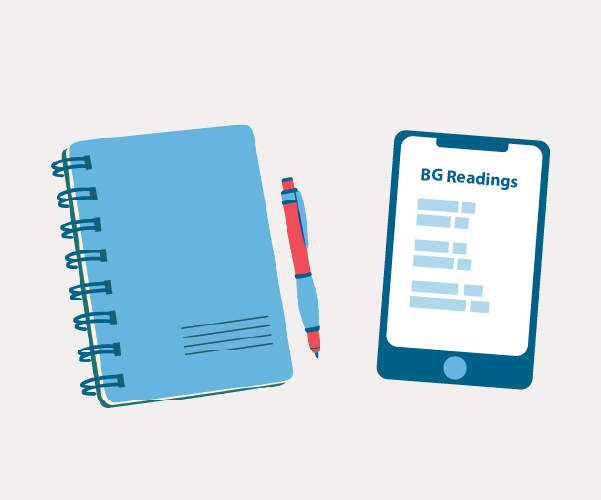July 28, 2025
4 mins
Rob Hyams
September 11, 2025
8 minutes

Managing diabetes in dogs can feel overwhelming at first. The first few months after our little guy Parker was diagnosed with canine diabetes were really tough. We were learning on the go and dealing with all sorts of new issues and challenges.
One thing we found out quickly was the importance of the glucose curve, which is a series of blood sugar (glucose) measurements taken over the course of a day.
It helped us. It helped our vet. And it helped Parker, though we hated having to poke him so many times throughout the day.
The purpose is to track how your dog’s blood sugar changes after receiving insulin and eating a meal. By plotting these values on a graph, you and your vet can see:
Think of it as a “day in the life” of your dog’s blood sugar, revealing whether the current treatment plan is keeping them in a healthy range.
When you plot your dog’s glucose readings on a graph — with time of day on the horizontal (x) axis and blood sugar level on the vertical (y) axis — the points connect to form a shape that rises and falls like a gentle hill. This is the curve.
A healthy glucose curve should have a predictable shape. Not too steep, not too flat.
A steep drop could signal the insulin dose is too high, while a flat line might mean it’s not working enough.
The shape of the curve is as important as the actual numbers, because it shows not just how high or low the blood sugar goes, but how it changes over time.
Every dog’s response to insulin is unique. Even the same dog may have changes over time due to age, weight, activity level, or other health issues. A glucose curve helps:

Running a glucose curve is a simple yet powerful test that helps fine-tune your dog’s insulin dose so they can feel their best and avoid dangerous highs and lows in blood sugar. It may be a bit unpleasant for you and your dog – especially getting readings in the middle of the night – but you will be better informed about your diabetic dog’s health. If we have concerns about Parker's diabetes management and are visiting his vet, we will run a curve beforehand to provide her with information on how Parker is reacting to his insulin.

We’re a couple of pet owners who’ve learned firsthand what it takes to care for a diabetic dog. When our own dog, Parker, was diagnosed, we were overwhelmed, so we built this site to make things a little clearer for others starting out. Everything here is designed to help you understand, plan, and feel more confident managing your dog’s diabetes.